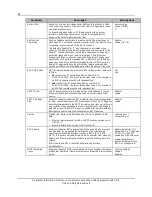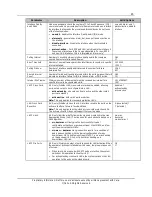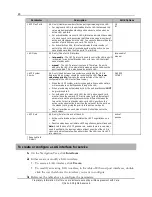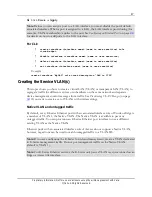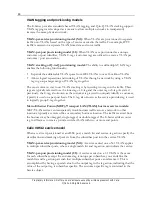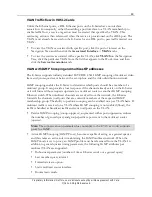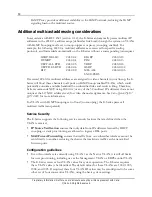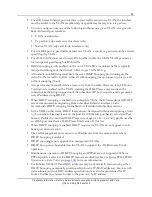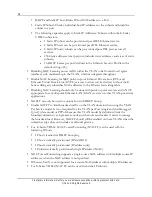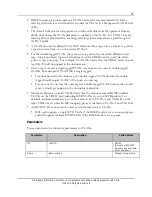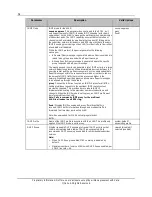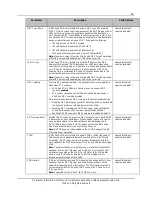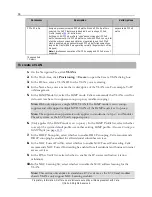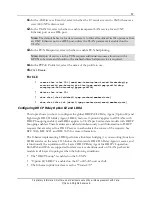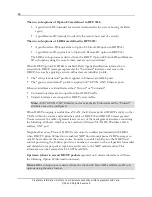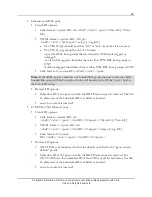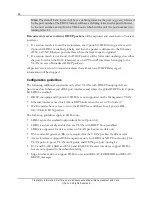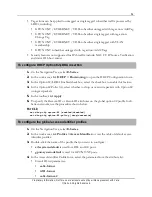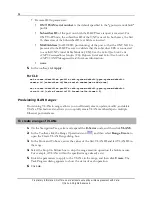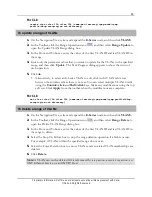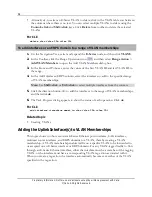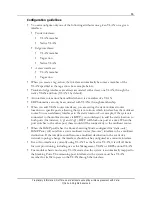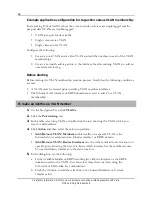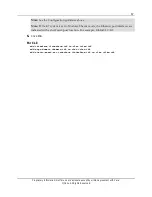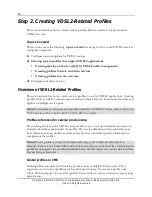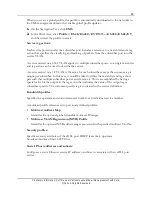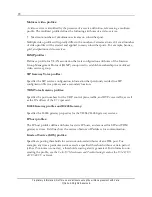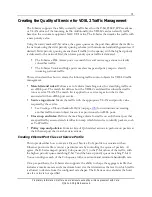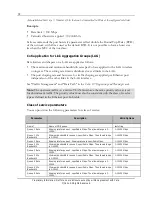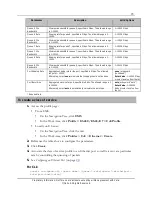
58
Proprietary Information: Not for use or disclosure except by written agreement with Calix.
© Calix. All Rights Reserved.
The two sub-options of Option 82 are defined in RFC 3046:
Agent Circuit-ID (intended for circuits terminated by the system hosting the Relay
agent)
Agent Remote-ID (intended to identify the remote host end of a circuit)
The two sub-options of LDRA are defined in RFC 3315:
Agent Interface-ID (equivalent to Option 82 Circuit-ID option in DHCPv4)
Agent Remote-ID (equivalent to Option 82 Remote-ID option in DHCPv4)
The LDRA sub-options are derived from the DHCP Option 82 Circuit-ID and Remote-
ID sub-options using the same format, and are not user-defined.
When DHCP Option 82/LDRA is enabled, Relay Agent identification information is
inserted into DHCP messages captured at the "Untrusted" interfaces and sent to the
DHCPv6 server by applying a system-defined access-identifier profile.
The "eth-system-default" profile is applied to Ethernet and xDSL ports.
The "gpon-system-default" profile is applied to E7 GPON ONT Ethernet ports.
Ethernet interfaces are identified as either "Trusted" or "Untrusted."
Untrusted interfaces are snooped for client DHCP traffic.
Trusted interfaces are snooped for DHCP server traffic.
Note:
All E7 GPON ONT Ethernet ports are implicitly Untrusted and the “Trusted”
attribute cannot be configured.
When DHCP snooping is enabled on a VLAN, the E-Series tracks all DHCP activity on that
VLAN within the system and maintains a table of DHCPv4 and DHCPv6 leases granted.
You can retrieve the table of granted leases via any of the management interfaces containing
the following attributes, which may be searched or filtered: VLAN ID, IP address, MAC
address, ONT port.
Neighbor Discovery Protocol (NDP) flood control is enabled automatically with LDRA
when DHCP Option 82 insertion is enabled. NDP flood control prunes NDP messages so
only IP hosts discover the access router. In order to enable visibility into the NDP flood
control processing, the E-Series provides a number of counters such as all packets forwarded
and discarded on a per packet type basis, and access to the NDP cached entries. This
information can be accessed via CLI, EWI and CMS.
Upstream (client to server) DHCP packets
captured on Untrusted interfaces, will have
the following Option 82 information inserted:
Note
: LDRA sub-options are derived from the Option 82 Circuit-ID and Remote-ID sub-
options using the same format.

